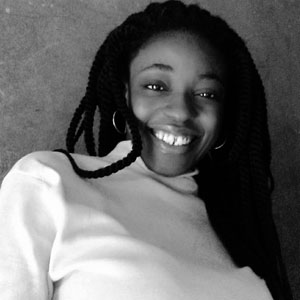Why don't overplucked eyebrows fully grow back?
Taking tweezers to your eyebrows can yield unpredictable results. So what determines if your eyebrows grow back after you pluck them?

Anyone who's taken tweezers to their eyebrows knows it can be a dangerous game. Sometimes, the hairs grow back just fine after plucking; other times, they never fully grow back, and you're stuck with thin brows that can't easily adapt to fashion trends.
So what, exactly, does plucking do to the eyebrows, and why do the hairs stop growing back after you overpluck them?
To explain, let's begin with an introduction to how eyebrows grow in the first place. As with other hair on the body, eyebrows have three growth stages: anagen, catagen and telogen. Anagen is the stage of active growth, where cells divide and increase in number. In this stage, hair follicles adopt an onion-like shape, and hair fibers start to emerge from the follicles.
The anagen phase of the eyebrows is short — only two to three months, compared with two to eight years for scalp hair. This shorter duration is why eyebrow hairs are much shorter than scalp hairs, said Dr. Yoram Harth, medical director of MDhair, a hair loss treatment company, and a former research fellow in the department of dermatology at the NewYork-Presbyterian/Columbia University Irving Medical Center.
Related: Why do we have eyebrows and eyelashes?
In the catagen phase, hair growth slows as the cell division and proliferation that were in full effect during the anagen phase begin to decline. This eventually results in cell death in the hair follicles, and the onion-like structures shrink. The catagen phase for eyebrows lasts two to three weeks.
During telogen, the final phase of hair growth, hair stops growing and the follicles "rest." This phase typically lasts longer for eyebrow hairs than for scalp hairs, around four months or longer, compared with two to three months for scalp hairs, Harth said.
"At the end of the telogen phase, the hair may fall out naturally, and new hair begins its cycle from the same follicle, entering the anagen phase," he said. "This cycle of growth, transition, rest and replacement is ongoing throughout our lives."
The continuous cycle is possible because the hair follicles are rich in stem cells that make them capable of recurring growth and self-renewal, according to a 2022 review published in the journal Frontiers in Cell and Developmental Biology. However, a variety of factors, such as aging and hormonal changes and physical damage, can disrupt this otherwise-continuous cycle, resulting in hair loss.
"When hair follicles are damaged, they may not be able to produce new hair," Harth told Live Science. "The type and extent of damage can determine whether this condition is temporary or permanent."
A clinical manual published in the journal Psychiatric Clinics of North America explains that, with temporary damage, the pores that the hair grows through are visibly open and the eyebrows will grow back if the person stops plucking them for a period of time. But when the hair follicles are permanently damaged, these pores become blocked with scar tissue, making it difficult to impossible for new hair to grow.
Harth shared tips on how best to pluck your eyebrows to avoid damaging the hair follicles: "Pluck your eyebrows every couple of weeks instead of every day or two, which can cause scarring and prevent hair regrowth," he advised. "Avoid using tweezers with broader, flat ends and rubber grips on the end — they tend to cause more traumatic plucking. Tweezers with an angled end are a better choice so you can pull in the direction of your hair growth."
This article is for informational purposes only and is not meant to offer medical advice.
Sign up for the Live Science daily newsletter now
Get the world’s most fascinating discoveries delivered straight to your inbox.

Racheal Ede is a freelance health writer. Her work has been published by Forbes Health, Motherly, Singlecare and Business Insider, among others. She holds a Bachelor of Science degree in medical laboratory sciences from the University of Nigeria. She uses her domain knowledge of science and medicine to create content on different health and science topics.










